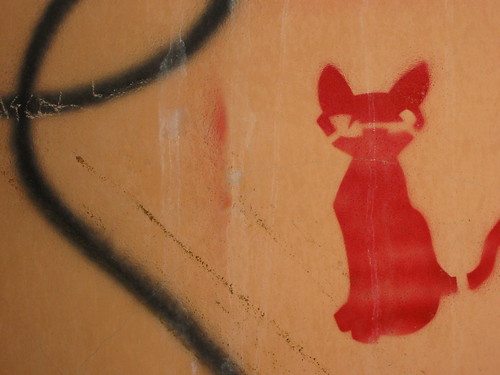
Red Cat
What rescues Wallace Stevens’s unrelenting earnest ‘philosophizing’ (up until, that is, near the very aurora-ed end) is sheer giddiness: ‘Here I have been sitting for an hour writing “The Book of Doubts and Fears.” Bang! I’m not a philosopher . . . —Pooh! Dear Two-and-Twenty, what solemn creatures we are! Here’s a list of Pleasant Things to drive dull care away, my lass, oh, to drive dull care away—and a jig, and a jig, and a jig, jig, jig:
black-birdsMy dearest, dearest Elsie—please do stop having doubts about me or yourself or anything . . . and learn as much as you can about pumpkin custards.’ (Written in early December 1908. That latter about pumpkin custards probably not offered up in the polymathic Olsonian rig of “Find out for yourself.”)
blue-birds
wrens
crocks of milk
pumpkin custards
hussars
drum-majors
young chickens
—
Unassembled materials for investigating arrangement, materiality, relation, and gap:
Nietzsche’s aphorism about how separating things shows “how much they belong together.”
Fourier’s (in Davenport) remark on form and relation.
Not gap, overlay. (Picasso’s bull of bicycle seat and handlebars.) Metaphor as simultaneity. Problem of objectivism—a girder in rubble (plain, expected) is an insufficiency against, say, a girdle in rubble (meretricious, assertive, new).
Cézanne’s painting is less about “gap” than about solidity. Competing solidities. To rephrase Ernest Fenollosa’s “No nouns in Nature”—No lines in Nature.
Thomas Basbøll: “(Wittgenstein's) refusal to assert the intangibility of the relation and instead simply arrange (in a perspicuous or surveyable presentation) the tangible materials involved.”